
- Length: 16–17cm
- Wingspan: 42–48cm
At first glance, these avian athletes can look very similar, but there are some key differences between them. Have a read of our handy ID guide and soon you’ll know your Swifts from your Swallows.
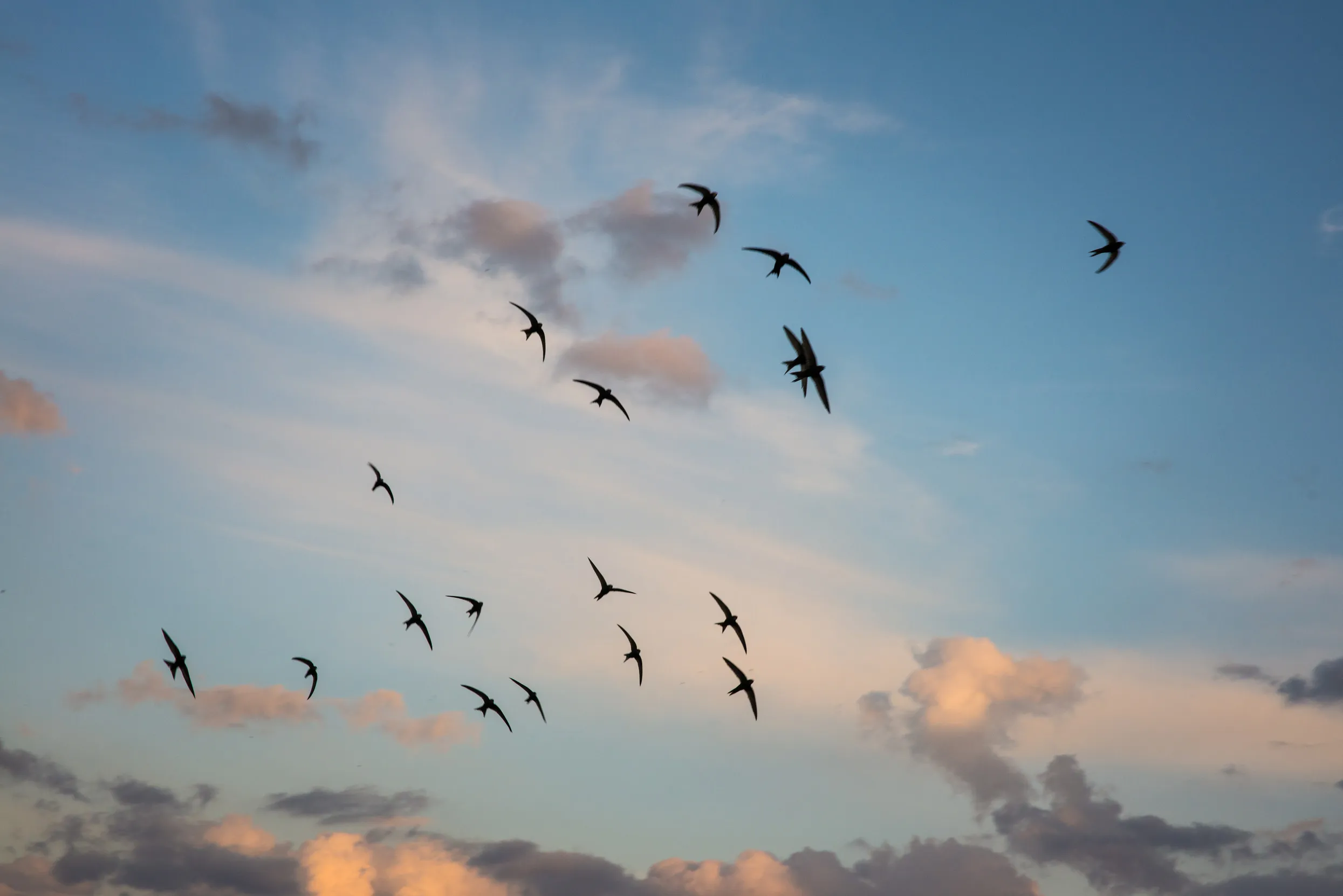
UK conservation status - Red

Swifts are masters of the air and spend almost their entire lives in flight – eating, drinking, sleeping and even mating on the wing. They usually only land when it’s time to nest, so you’ll never see them perched on overhead wires like Swallows. Groups of Swifts can often be seen flying around rooftops at high speed.

Swifts make an exuberant, high-pitched screaming call, which is why groups of Swifts seen flying around nesting sites are known as ‘screaming parties’.
Swifts raise their chicks in gaps under roof tiles and in cavities in the walls and eaves of buildings. You might see them flying up to a roof at high speed, before tucking in their wings and disappearing inside. Pairs return to the same nest year after year.
Swifts migrate to the UK from Africa each year, and only spend a few months with us while their raise their chicks. Swifts begin arriving from late April, with most arriving in May. They then head back to Africa from early August onwards.
You could see Swifts flying high in the sky over most habitats, as they search for small invertebrates to eat and to feed to their chicks. Nesting Swifts zoom around buildings at roof level.
Look out for nesting Swifts near you and record them on the Swift Mapper

During its lifetime, a Swift can fly around two million miles – that’s equivalent to more than four trips to the Moon and back!
UK conservation status - Green
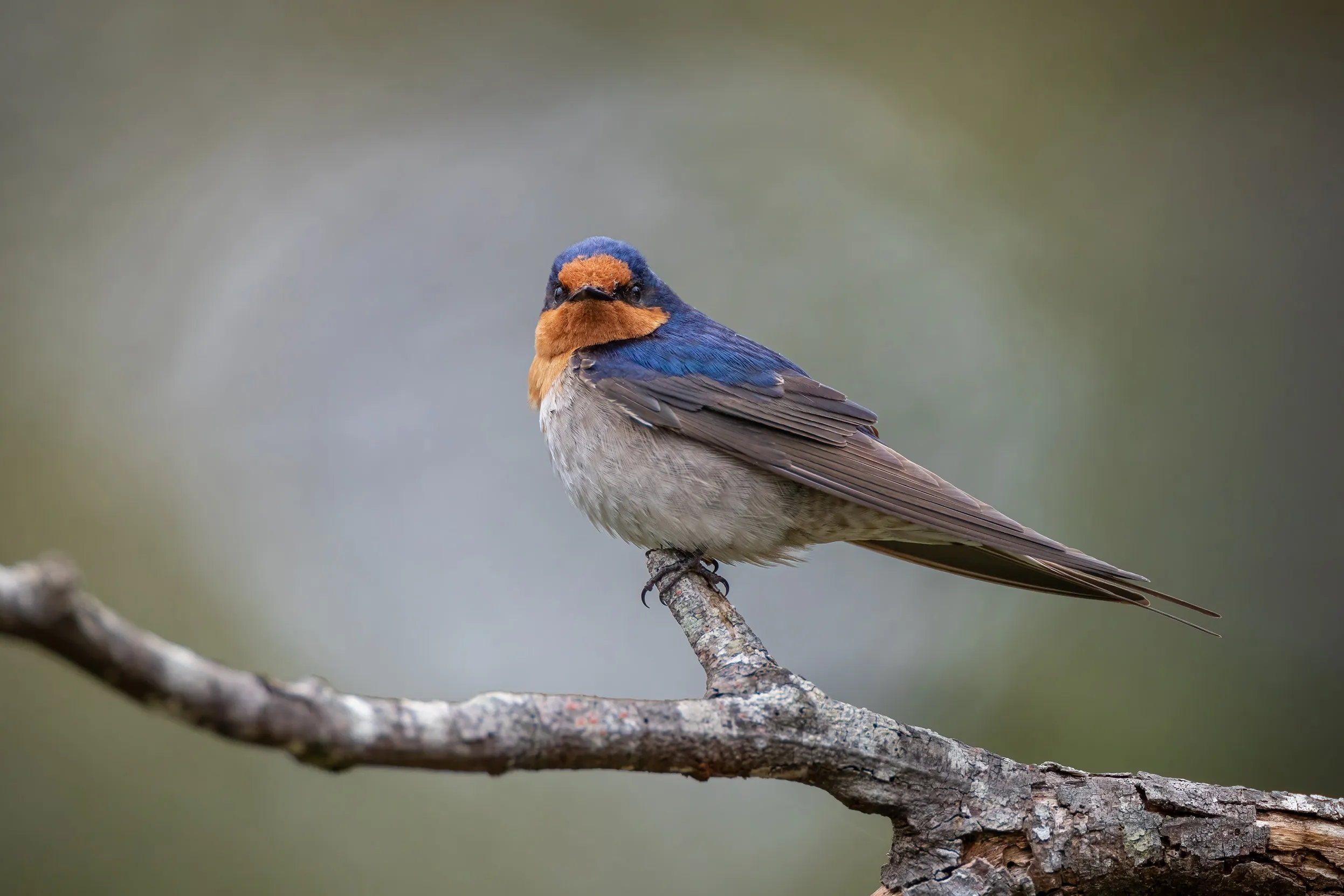
Swallows are very graceful and acrobatic in flight, darting and gliding low to the ground in search of insects. You might see them skimming over lakes and rivers, scooping up water to drink.
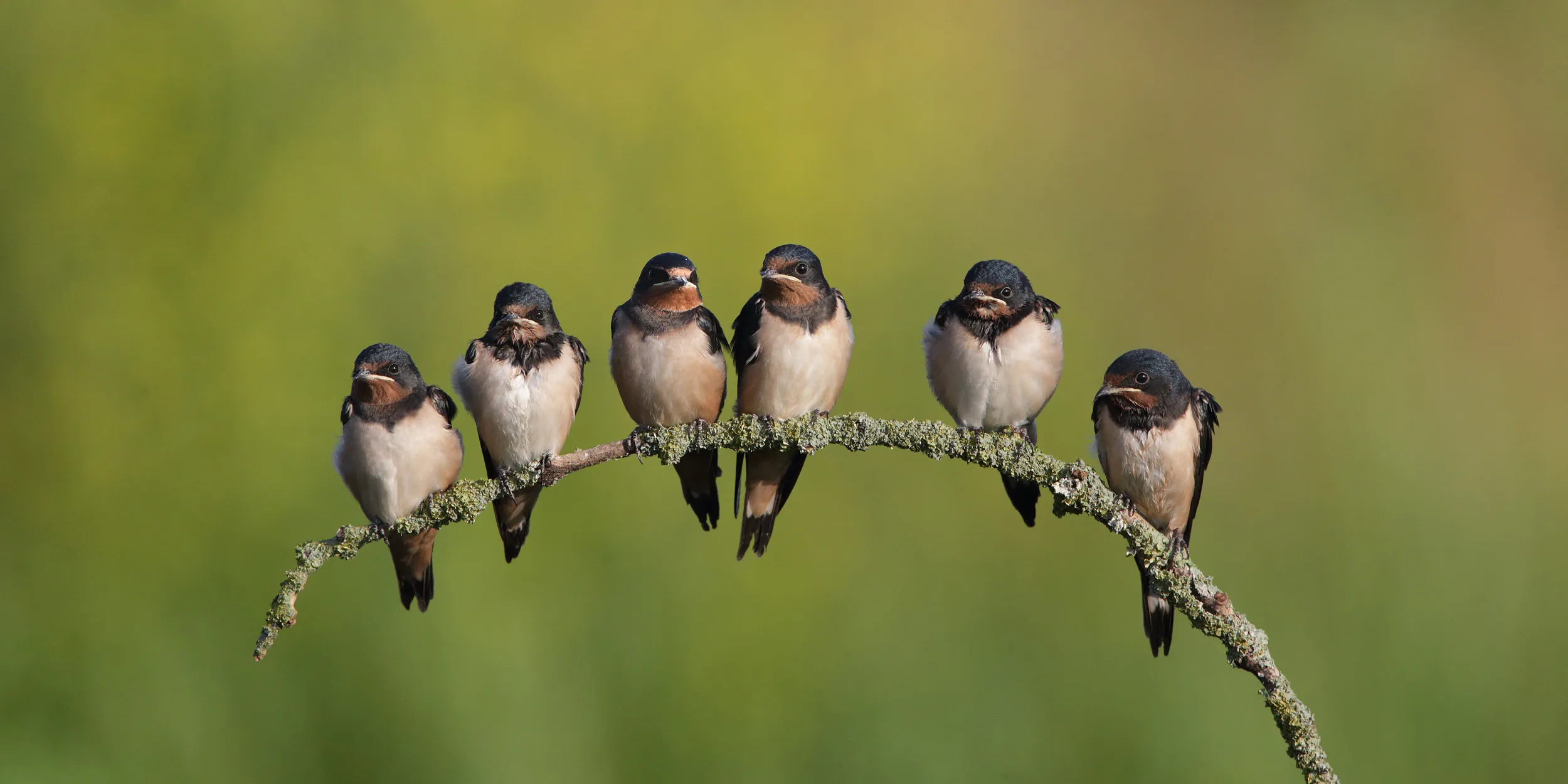
Swallows have twittering, trilling calls which are distinctly different from the screams of Swifts.
Swallows like to nest in barns, sheds and other outbuildings. They build their cup-shaped nests from mud, usually on a beam, ledge or joist that’s sheltered from the elements. As the chicks grow, you might see their heads pop up over the rim of the nest to demand food from their parents.
Swallows begin arriving in the UK from Africa in April and most leave in late September and October.
Unlike Swifts, Swallows rarely venture into towns, preferring open countryside where flying insects are plentiful. They can often be seen around open water too. As autumn approaches, large groups of Swallows often congregate on overhead wires and in reedbeds before heading south, back to Africa.
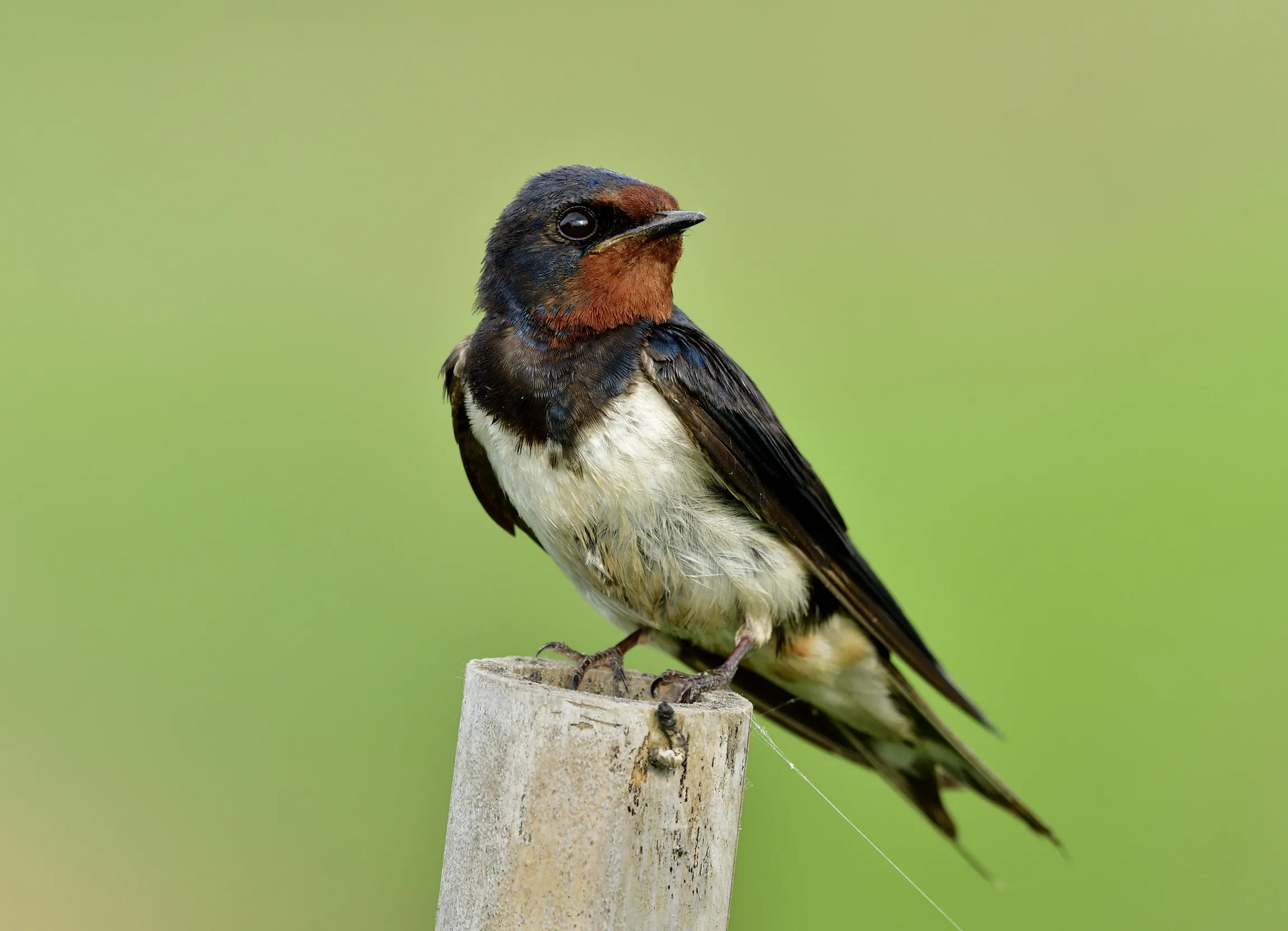
People used to believe that Swallows hibernated at the bottom of ponds over winter! Now we know that they fly all the way to Africa in autumn, before returning to our shores in spring.
UK conservation status - Red
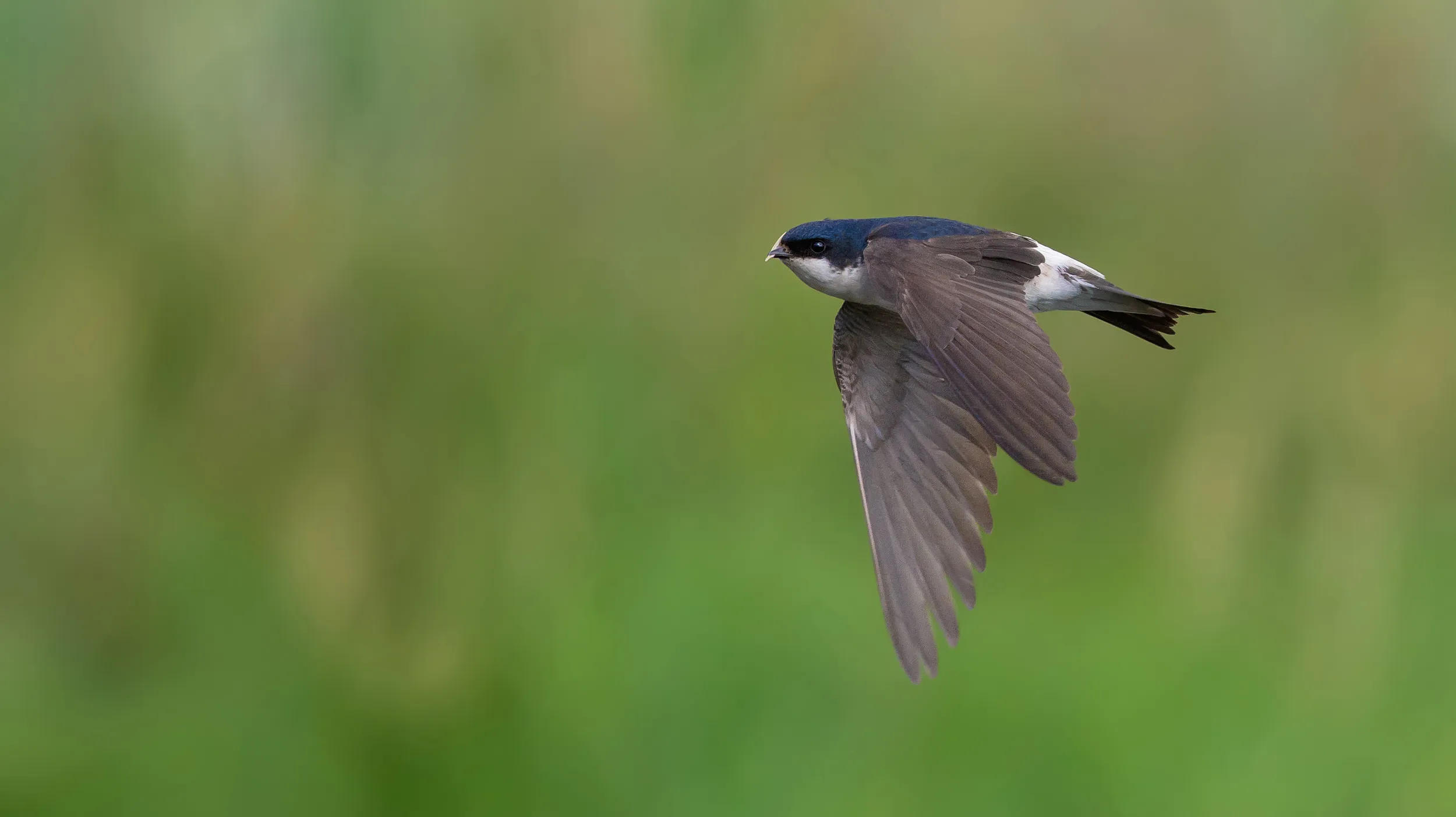
House Martins are most active in the morning and evenings. They zoom around at mid-height, usually in flocks, coming down low over water. You might even see them collecting mud to build their nests.
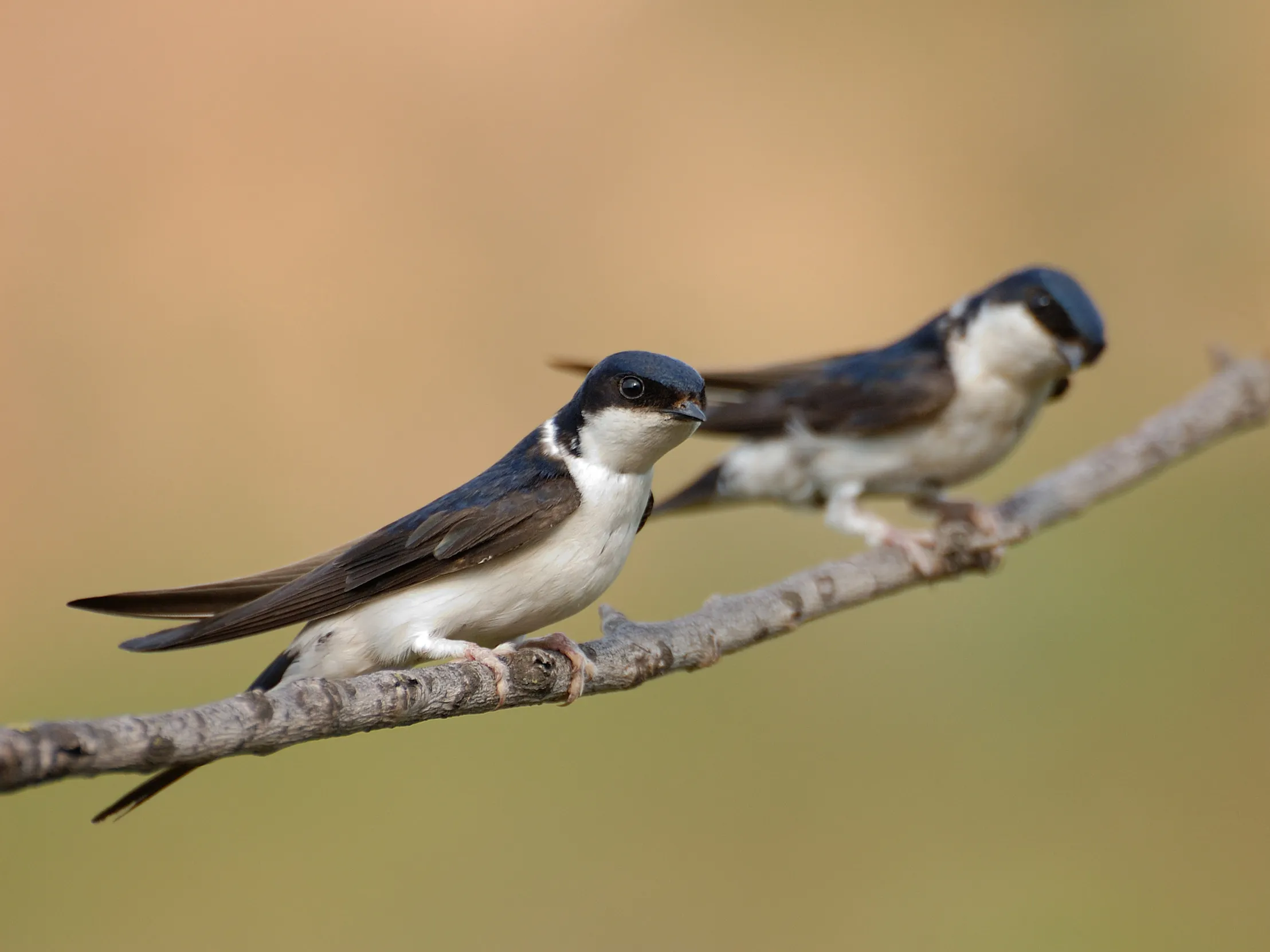
House Martins have a rapid chattering call.
House Martins usually build their mud nests under the eaves of our homes and buildings – hence their name! Unlike the Swallow’s open cup nest, House Martins only leave a small opening at the top of their nest – as the chicks grow, they can often be seen peeking out from the hole, impatiently awaiting their next meal. House Martins tend to nest in colonies, sometimes with several nests build side-by-side.
Like Swallows, House Martins usually arrive in the UK in April and leave again in September and October, heading back to Africa for the winter.
Provided that there’s plenty of insect food nearby, House Martins can often be seen in towns and villages, due to their reliance on buildings for nesting. Wetlands and lakes are also a hotspot, as House Martins prey on the flying insects that thrive in these wet areas.

House Martin pairs work together to build their nest using around a thousand pellets of mud, each carefully collected using their beaks. House Martins often re-use their nests, so if you have a nest on your house don’t knock it down!
UK conservation status - Green
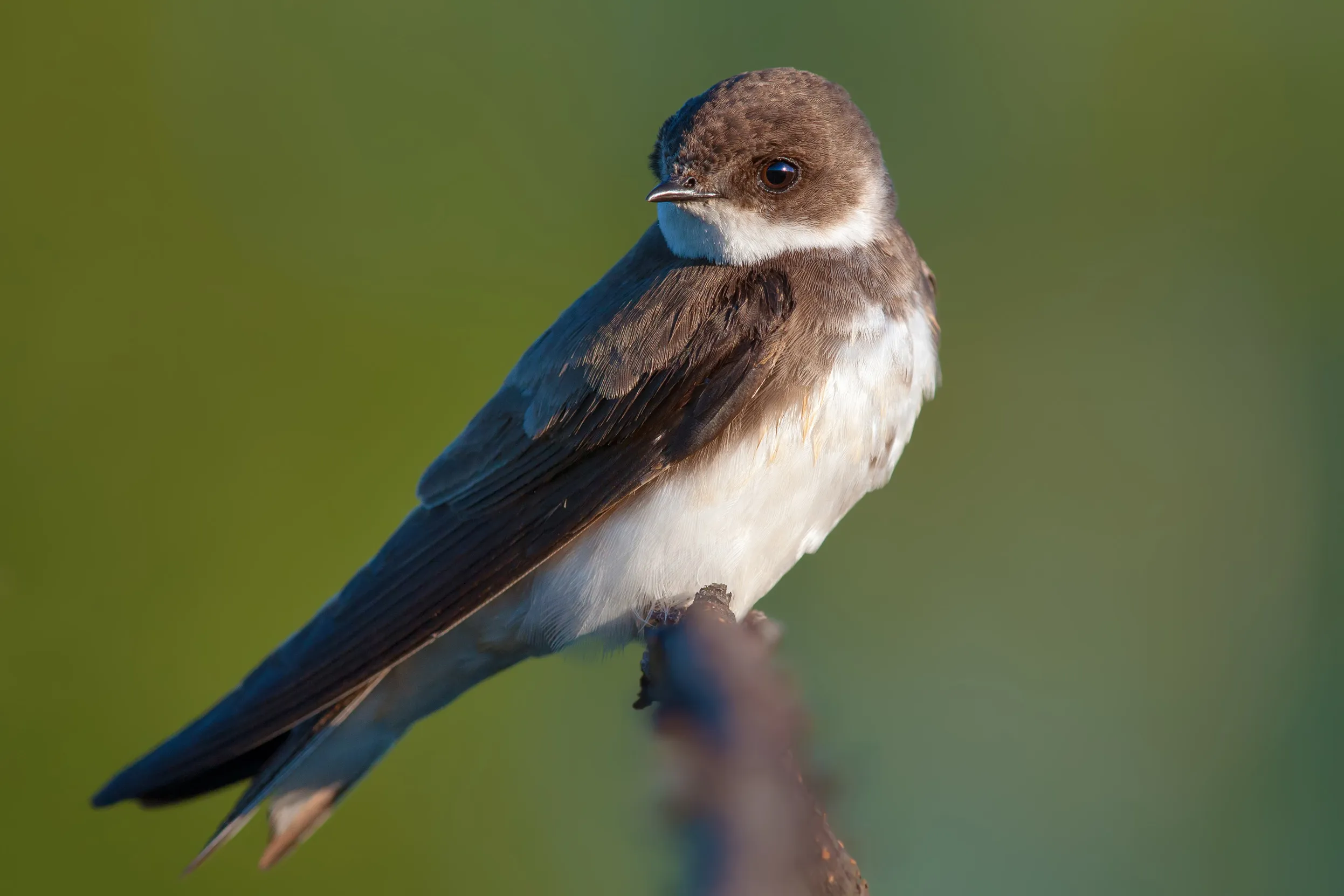
Sand Martins tend to swirl and flap, rather than glide. They fly mainly over water and open countryside, and will also perch on overhead wires and branches, often in groups.

Sand Martins have a harsh rattling call.
Unlike Swallows and House Martins, which build mud nests, and Swifts which nest in roofs, Sand Martins dig burrows. They usually make their nest holes in steep sandy cliffs, riverbanks, or gravel pits, but some House Martins have been known to try holes in brickwork and pipes poking out of walls. House Martins are sociable birds and breed in colonies.
One of our earliest summer visitors to arrive, Sand Martins often reach the UK in March. Most leave for Africa in September.
Sand Martins feed over farmland and wetlands, especially along rivers, around lakes and at man-made gravel pits. They tend to avoid built-up areas, woods and mountains.
Sand Martins line the nesting area at the end of their burrow with grass and feathers.